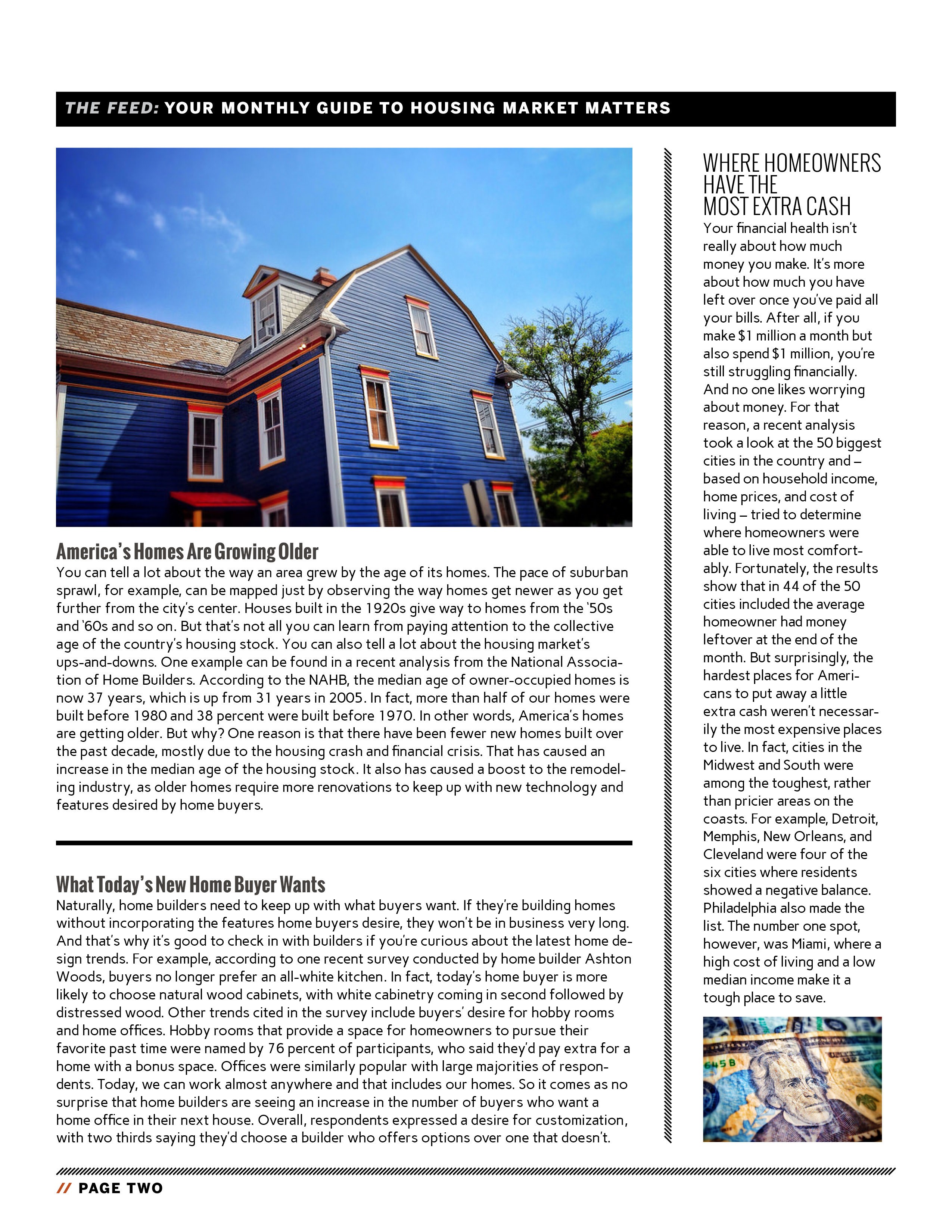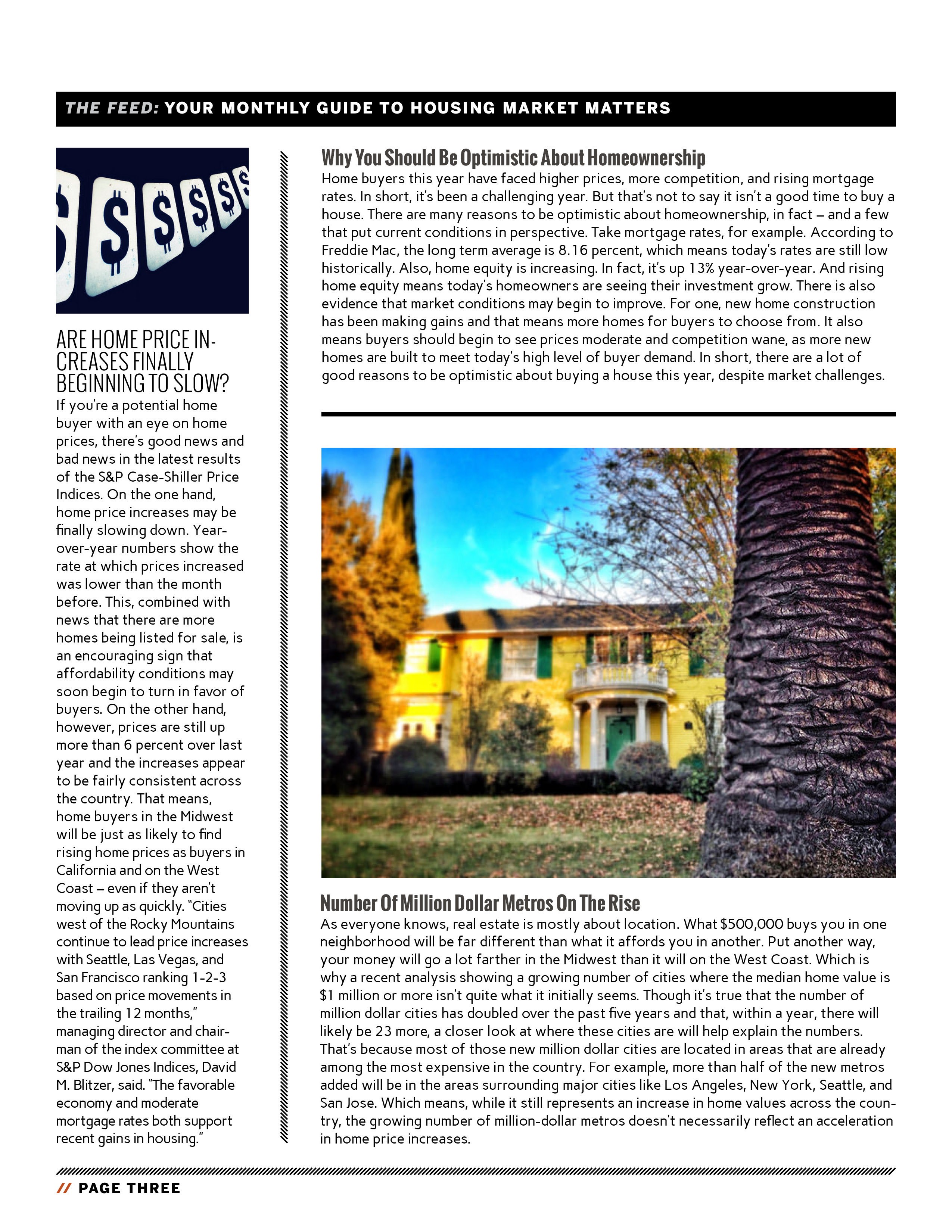Four Things To Do Before You Buy

How Student Loan Debt Impacts Home Buyers
Young Americans want to own a home. Research consistently shows large majorities who say they aspire to one day become homeowners. And yet, the number of first-time home buyers active in the market has been lower than what is historically normal for several years. So why aren’t more young Americans buying houses? Well there are a number of factors at play but, among them, student loan debt is a big one. According to one recent study, the average monthly student debt payment for current renters who say they’d like to buy a home in the next year is $388. Naturally, an extra $400 a month to devote to a mortgage payment could go a long way. In fact, with that money, a buyer could afford a house that cost almost $100,000 more. But though that may seem discouraging, the same report also found that prospective buyers with student loan debt can still afford 52.3 percent of homes currently listed for sale. And, in areas where there are more affordable homes available for sale, it’s even easier to find something in a price range that works. In St. Louis, for example, a buyer with student loan debt can still afford nearly 75 percent of currently listed homes. More here.
Fewer Home Buyers Making Offers Sight Unseen
No one wants to make big decisions hastily. It’s a great way to make mistakes and end up with regrets. Which is why, in an ideal situation, home buyers would have time to consider the pros and cons of multiple houses and choose the one that best fits their needs and wishlist. Unfortunately, in a competitive market, that’s not always possible. And so, buyers have to be prepared and ready to make an offer when they see a house they like. The good news is, now that inventory is beginning to rise and houses are staying on the market longer, home buyers have more time to weigh their decision. In fact, according to a recent survey, the number of buyers who made an offer on a house without seeing it first has fallen 15 percent since late last year. This is a good indication that buyers are feeling some relief and aren’t feeling pressured to move as quickly as they were when inventory was tighter. But though this is encouraging news for potential buyers, it doesn’t mean the market isn’t competitive. If you’re interested in purchasing a home any time soon, it’s still best to do your homework, be prepared, prequalified, and ready to make an offer when you find a house you like. More here.
More Americans Think Now’s The Time To Sell
Nearly 80% of Americans say now is a good time to sell a house, according to a recent survey from the National Association of Realtors. This may be good news for buyers. These days, there are more home buyers than there are homes for sale, which is the primary factor causing prices to rise. But rising prices have also caused homeowners to think about the benefits of selling their home. And, if the results of the NAR’s Housing Opportunities and Market Experience survey are any indication, a growing number of them are beginning to consider putting their home on the market. If so, it’ll help provide additional choices for home buyers while also slowing the rate at which prices move upward. Lawrence Yun, NAR’s chief economist, says he believes American homeowners were waiting to see if the gains got any better before making a decision. “With prices having risen so quickly, many consumers were deciding to wait to list their homes hoping to see additional price and equity gains,” Yun said. “However, with indications that buyers are beginning to pull out, price gains are going to decelerate and potential sellers are considering that now is a good time to list and bring more properties to the market.” More here.
Inventory And Home Sales Flat In August
Sales of previously owned homes were unchanged from the month before in August, according to new data from the National Association of Realtors. The number of available homes for sale was also flat, with unsold inventory at a 4.3-month supply at the current sales pace. But, though there was little change in the numbers, Lawrence Yun, NAR’s chief economist, says buyers may be getting ready to move. “Strong gains in the Northeast and a moderate uptick in the Midwest helped to balance out any losses in the South and West, halting months of downward momentum,” Yun said. “With inventory stabilizing and modestly rising, buyers appear ready to step back into the market.” In other words, though there hasn’t been a significant change in conditions, there is a sense that price increases and low inventory are beginning to move in the right direction. This can be seen in the regional results, which show that some areas are improving at a quicker pace than others. Another indicator that relief may be on the way is how long the typical property stayed on the market in August. That’s because, the number of days homes were available before selling moved up for the first time in months. But, despite the improvement, properties are still selling quickly. In fact, the typical home sold in just 29 days in August. More here.
Financial Security Boosts Housing Sentiment
It’s said that there are two sides to every story. But there are also two sides to the calculations potential home buyers undergo when deciding whether or not it’s a good time for them to look for a new house. After all, buyers have to take into consideration the cost of homes in the areas they’re looking to live but also their own financial security. That’s why Fannie Mae’s most recent Home Purchase Sentiment Index is encouraging. Because, though Americans have concerns about housing affordability, they are feeling confident financially and secure in their jobs. In fact, the number of survey respondents who said they aren’t concerned about losing their job rose 15 percent over the month before and those reporting that their income is higher than it was 12 months earlier hit a new survey high. Doug Duncan, Fannie Mae’s chief economist, says Americans are feeling the effects of a stronger economy. “Consumers are attuned to the divergence between the slowing housing market and strong macro economy,” Duncan said. “Consumers were less optimistic this month about both home buying and home selling conditions, while perceptions of income growth and confidence about job security are at survey highs.” More here.
Fall Forecast Sees Improvement On The Horizon
There are many different factors that play a role in the housing market’s health. When home buyers and sellers decide that its time for them to make a move everything from their job security to the global economy has an effect. For example, economic instability half way around the world can move mortgage rates, which will affect how much house you can afford. But what you can afford is also affected by how much you earn and how secure you feel in your job. In short, there’s a lot to keep an eye on. That’s why it can be helpful to tune into expert forecasts and opinions, since most of us don’t have the time or inclination to weigh all of the moving parts that determine what it’ll cost to buy the home of our dreams. So what are the experts saying about the upcoming fall market? Well, according to Freddie Mac’s most recent outlook, there may be reason for optimism. That’s because, though they say fall buyers will face many of the same challenges that held summer sales back, Freddie Mac chief economist Sam Khater says there is good news to be found. “The good news is that the economy and labor market are very healthy right now, and mortgage rates, after surging earlier this year, have stabilized in recent months,” Khater says. “These factors should continue to create solid buyer demand, and ultimately an uptick in sales, in most parts of the country in the months ahead.” More here.
Is It A Good Time For You To Make A Move?
Please check out our September Newsletter!!




